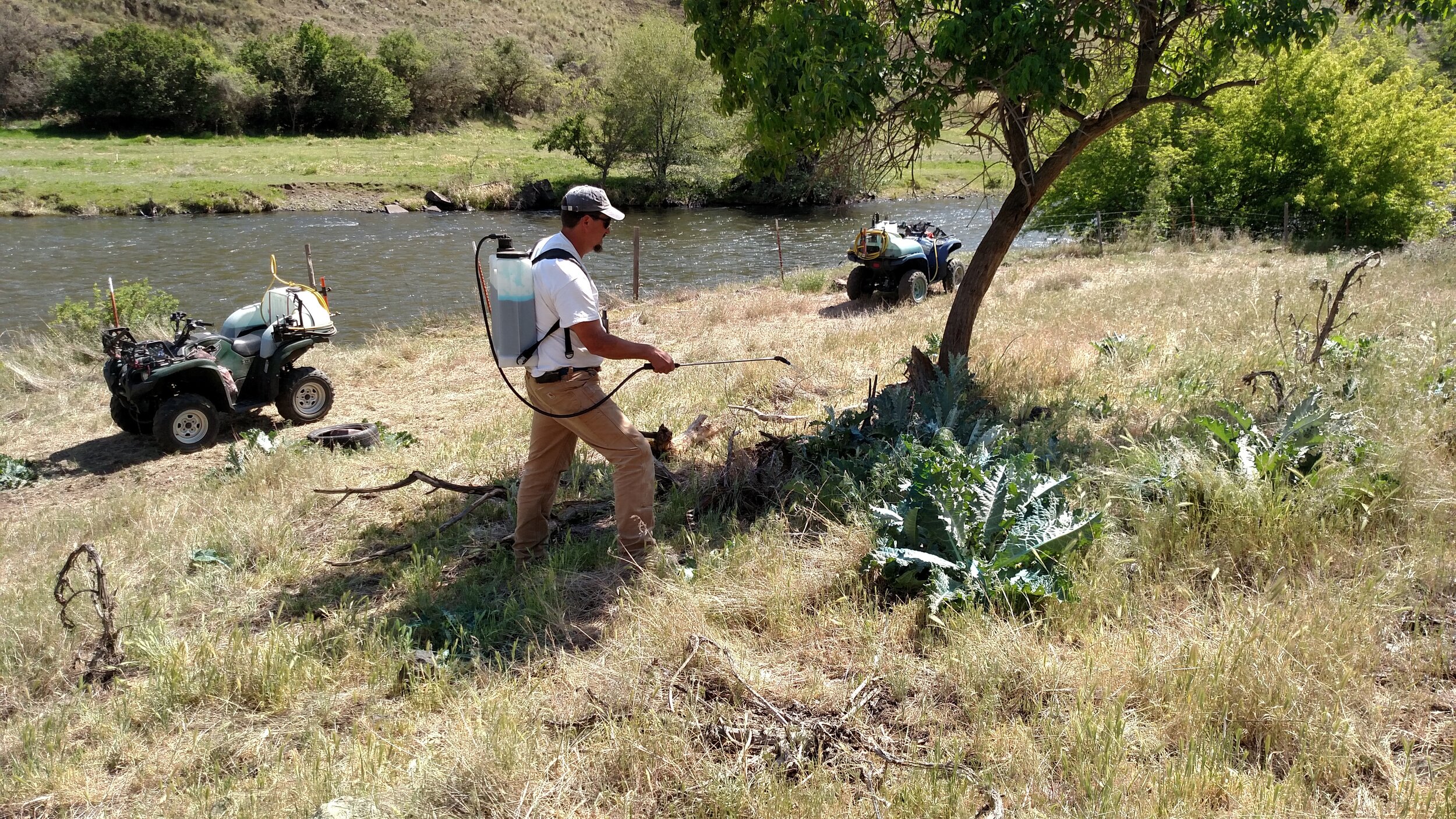Wallowa Canyonlands Partnership
Weeds threaten the vitality of working lands by increasing erosion, reducing food availability to wildlife and livestock, and altering natural processes such as fire. The Wallowa Canyonlands Partnership (WCP) began in the early 2000’s as a pilot program for cross-jurisdictional noxious weed management in the Grande Ronde River watershed. In the beginning, the WCP brought together private and public entities to treat and manage weeds across fence lines and it has been widening its scope ever since. Since its inception, the WCP has coordinated over 17,500 acres of noxious weed mitigation.
Weeds Threaten Rugged Country
Today, the WCP covers a cooperative weed management area that includes most of Wallowa County and a small portion of Asotin County, Washington. The management area includes the canyon grasslands of the Snake, Imnaha, and Lower Grande Ronde River watersheds. We focus on river corridors because they spread seeds easily. Because this country is rugged and steep, we hire local contractors who access the terrain via foot, horse, river raft, and helicopter.
Working Together
Working across fence lines and learning from one another is the only way to stop this invasion. The WCP works with over 60 private landowners each year, 10 public agencies, and local contracting businesses to improve the health and productivity of working lands. We set priorities, create maps, monitor treatment, and implement on-the-ground weed control. Every year, we treat more than 1,500 prioritized acres, adding $300,000-$500,000 to the local economy through salaries, contracts, and supplies.
Many Methods
Weeds have extensive root systems that can sprout even after their tops are destroyed. Some weed seeds remain viable for many years. Consequently, we employ different techniques depending on the situation, which is called integrated noxious weed management. We control weeds physically (pulling or chopping), chemically, (spraying), and/or biologically (releasing a plant's native insect predator).
YOU Can Stop the Threat
We need your help! Luckily, there are ways you can prevent the introduction and spread of noxious weeds.
Protect Your Property
Avoid planting weed species in your yard or garden. Even though many noxious weeds are available in nurseries and seed catalogs because they are quite attractive, choose non-invasive plants instead.
Learn to identify and then remove noxious weeds from your landscape.
Plant native species in your landscape.
Watch for new weed populations, especially along roads and waterways and in disturbed bare soil.
Create a property weed management plan and discuss it with your neighbors. Ideally, coordinate your efforts with them.
Use only guaranteed noxious weed free or sterilized bird seed and certified weed-free hay, straw, and mulch.
Minimize soil disturbance and reseed disturbed areas with native plants.
Inform your friends, neighbors, newspaper editors, and local and government officials about the importance of slowing the invasion of noxious weeds.
Stop the Spread of Noxious Weeds
Clean your gear and equipment - Many noxious weeds are unknowingly spread by contaminated equipment, gear and recreational vehicles. Weed seeds can get lodged in skid plates on the underside of vehicles and remain even after a pressure wash. Clean and inspect your equipment, vehicles, and gear after each use to ensure no "hitchhikers" travel with you to your next adventure.
Clean your clothing, pets, and livestock- Enter public trails with clean shoes and clothing. Simply brushing animals, boots and clothing before leaving sites will help prevent the spread of noxious weeds to other areas.
Use Weed Free Forage - Use only pelletized or certified weed-free hay and livestock feed prior to and during your trip.









